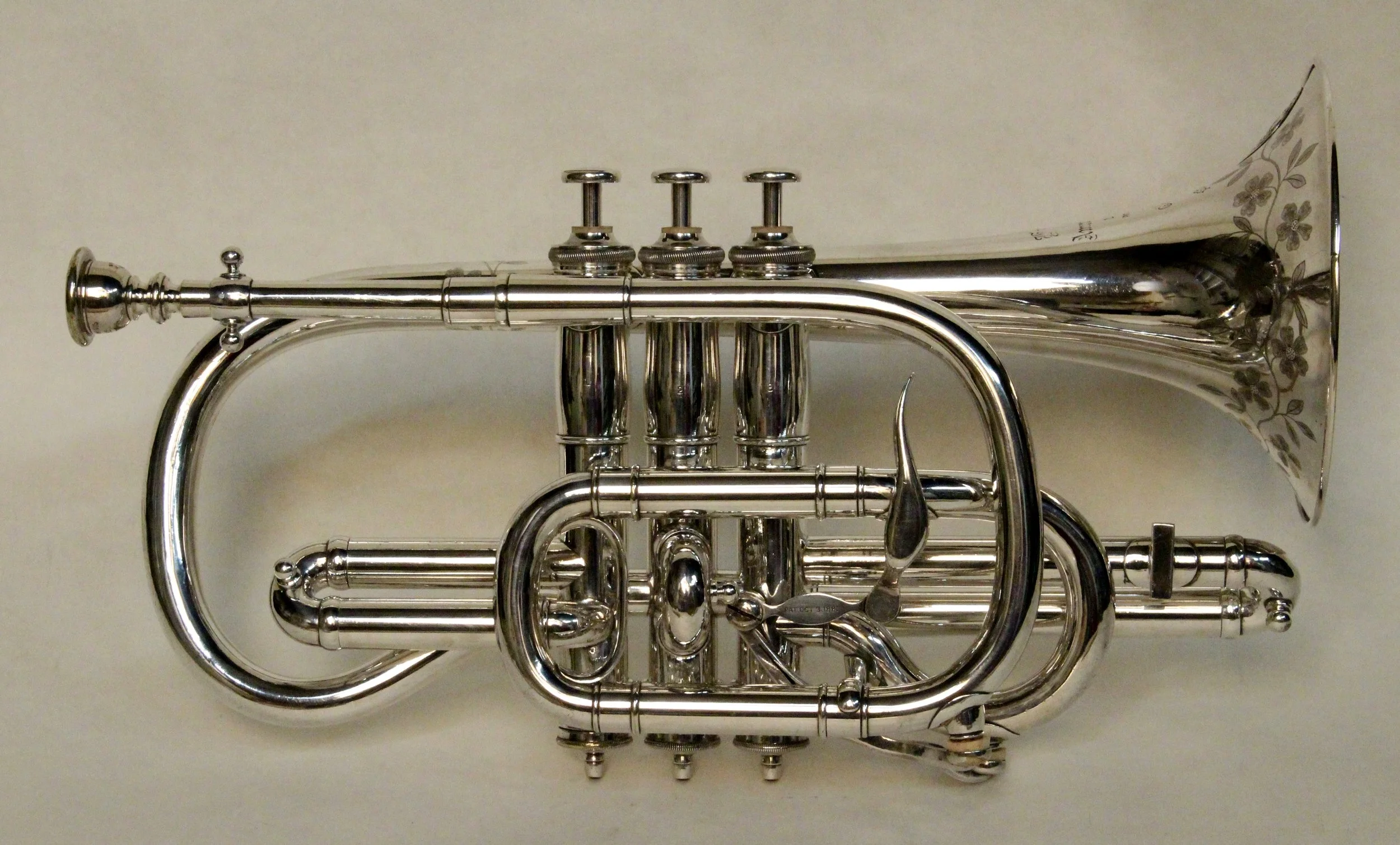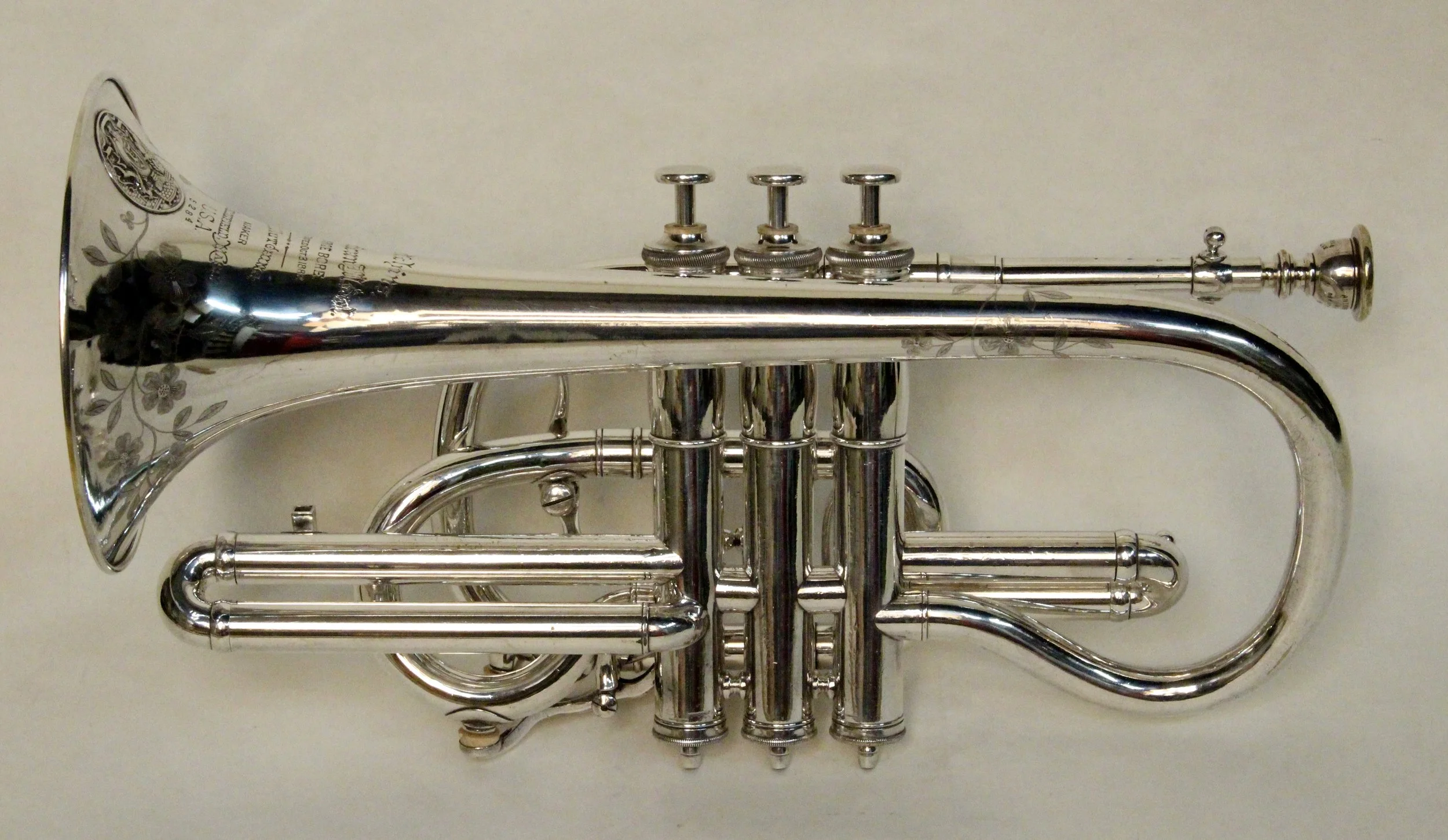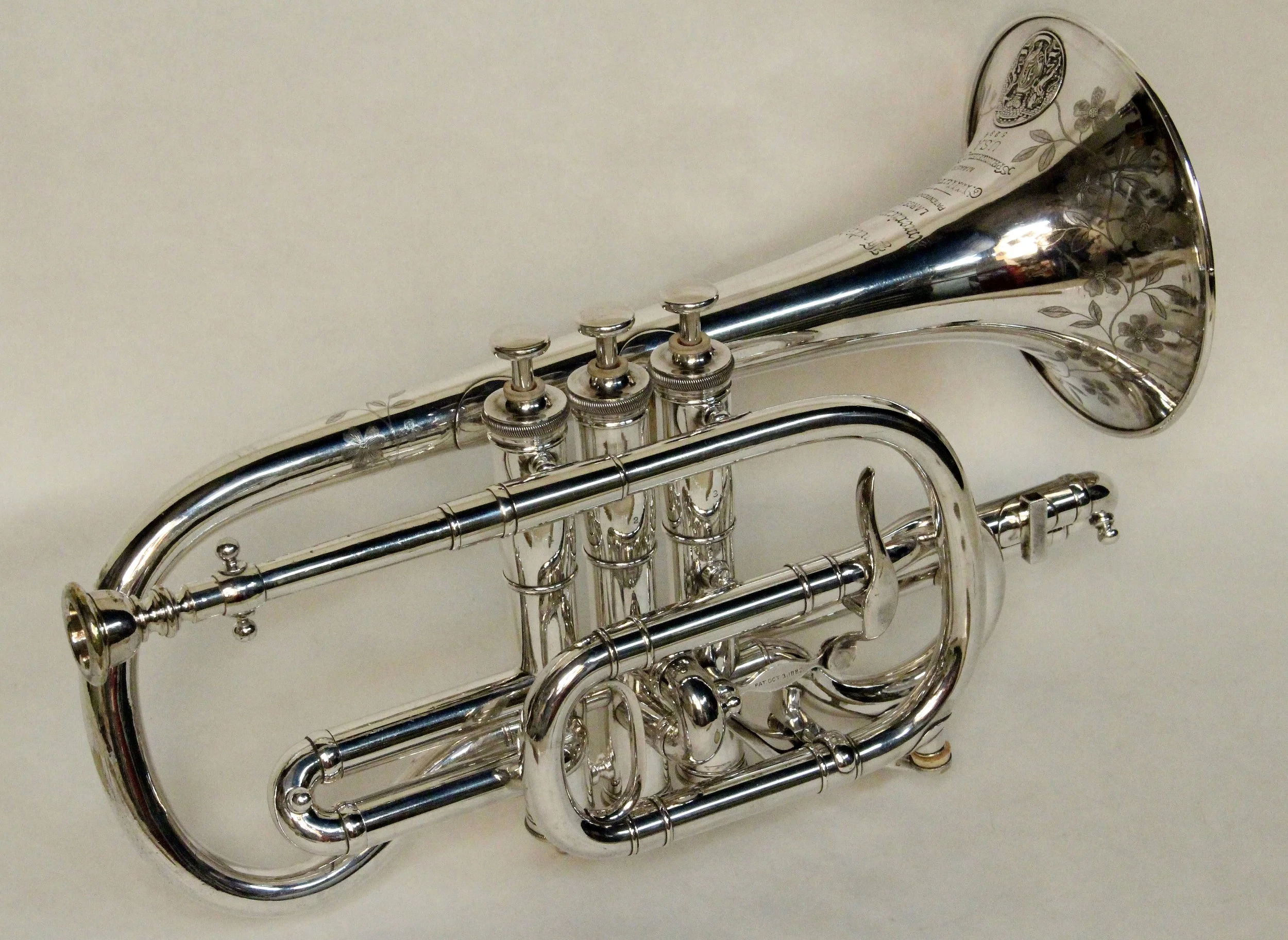Bb Cornet by C.W. Hutchins
Hutchins advertising from 1883.
Charles Willard Hutchins is best known for owning the business that produced cornets utilizing John Heald's first patent for a waterkey actuated by the fingers of the left hand while in playing position. This mechanism can be seen in both the advertisement from the 1883 Springfield city directory and on the cornet featured here that was made at about the same time. I was happy to locate this instrument, since it is very well preserved with original finish and almost all original parts. It retains the original Bb shank, although the mouthpiece shown is not original and it is also missing the A shank, case and whatever else may have come with it. The lyre socket is not original.
Little is known of Hutchins' instrument making activities and this is the first such instrument that I have had the chance to examine. What is known is that John Heald went to work for Hutchins after working for Isaac Fiske. According to late jazz cornetist David Pinardi, who played and had made a study of Heald cornets and had some of his original papers and drawings, reported that Heald went to work for Fiske in 1867. However, in the 1880 federal census, he is listed as a music teacher in that city. Regardless, he must have learned something of the business of brass instrument making while with Fiske and eventually established his own manufactory in 1889.
Heald contracted with the 22 year old C.W. Hutchins in May of 1882 to manufacture band instruments and assigned the rights to the patent for his waterkey to that business. This was two months before applying for the patent, but the confidence of the two men proved fruitful. Heald later wrote that this model cornet was produced from 1882 until 1888. Prior to hiring Heald, Hutchins may have been selling imported brass instruments. There is at least one Hutchins cornet known (in the Pinardi collection) without this patented waterkey or the royal looking embossed shield and likely predates these.
Prior to his retail and manufacturing activities, Hutchins led a brass band and drum band. It is interesting to note that in a February, 1882 ad for Hutchins bands, tickets were being sold at M.J.D. Hutchins' Music Store in Springfield. Mary Jerusha Darling Hutchins was Charles' mother and listed as a music teacher in the 1870 census. She was from a prominent Springfield family and may have aided Charles in this new business venture. His father was listed as a farmer and laborer at different times.
Hutchins also offered bicycle bugles in finishes ranging from plain brass to burnished gold plating, fully engraved and set with precious stones. This was the height of the bicycle craze and bicycle clubs were even more common than brass bands. The advertisement shown here is from the Pinardi collection.
This cornet is a very close copy of the famous Courtois cornets that were favoured by the top soloists at the time. The length with mouthpiece removed is 12 1/2", the bell diameter is 5" and the bore measurement is .462", which is about the same as the Emerson's Model Courtois. Notice that the ad in the first image states that this cornet was "used and recommended by Walter Emerson". My example is stamped "American Model". Perhaps this was made after the introduction of the Courtois Emerson's Model. I've never measured the bell of the Emerson's Model, but this bell is very close in dimensions to the Arbuckle's and Koenig's Models.
Comparing this valve section to Courtois cornets of the time, the stems, buttons and top and bottom caps are interchangeable and piston diameters are also the same. This is the same situation as in the piston valve Fiske cornet featured on this site and several other makes that I have examined. Courtois instruments were always much more expensive than the competition and it seems unlikely that they would have had the excess production to manufacture valve sections for other makers. Another possibility is that Courtois was contracting for the supply of these assemblies from another maker, who was also supplying other makers including Fiske and Hutchins.
Another interesting fact gleaned from a letter, dated November 5th, 1886, in the Pinardi collection is that Fiske offered to sell his business to John Heald and indicated that Heald had previously expressed interest in this. This was only one month before the business was purchased by C.G. Conn, so it seems that he already had another business plan incubating by that time.






